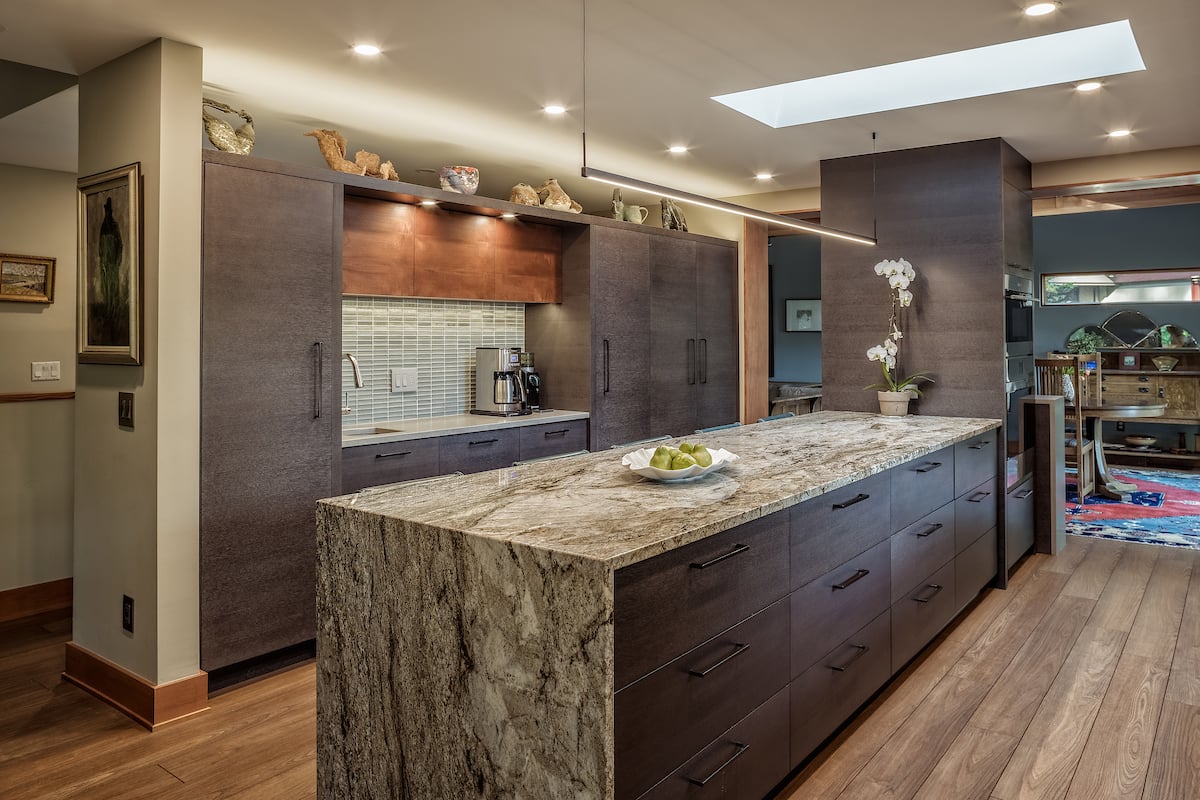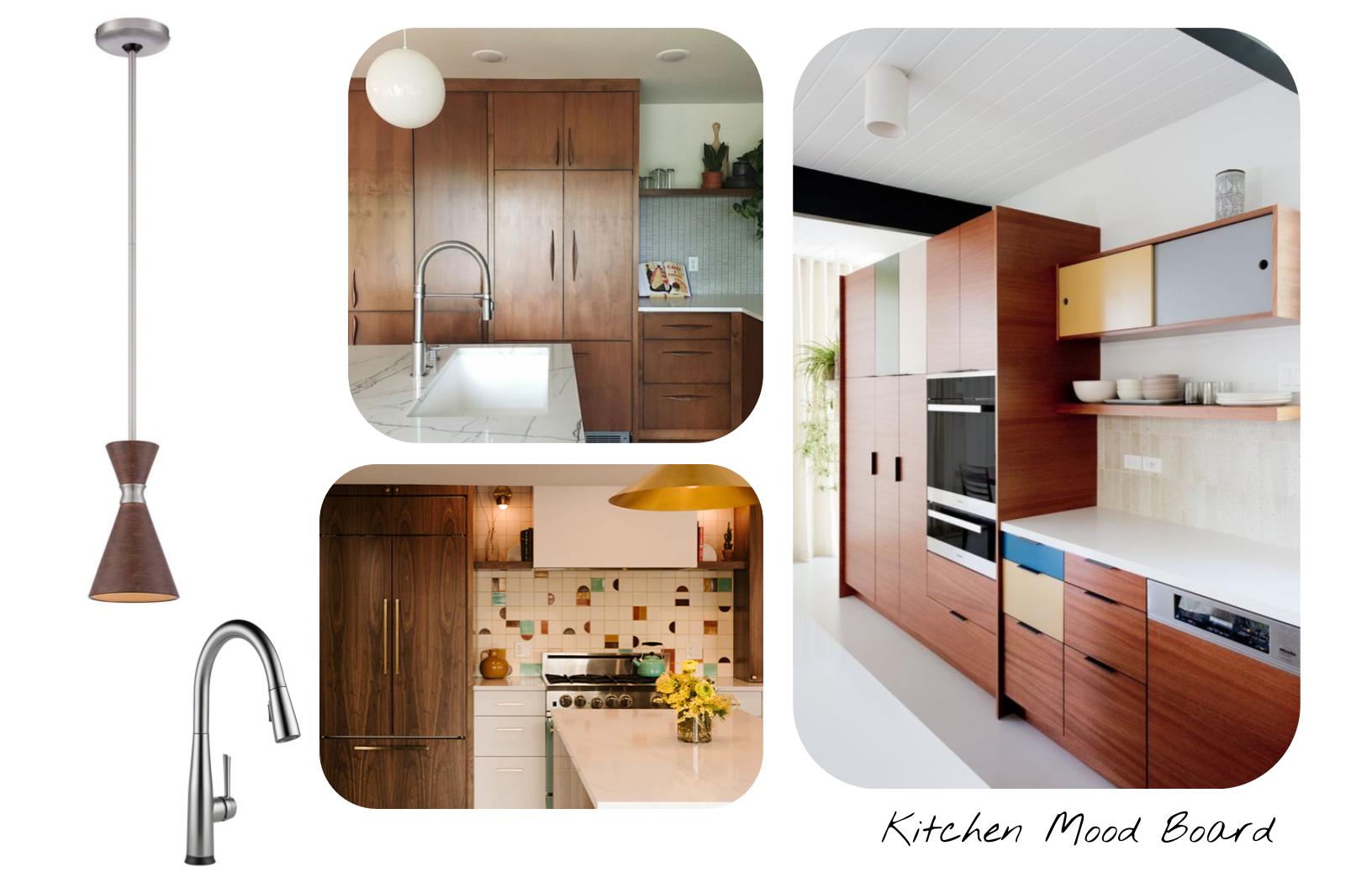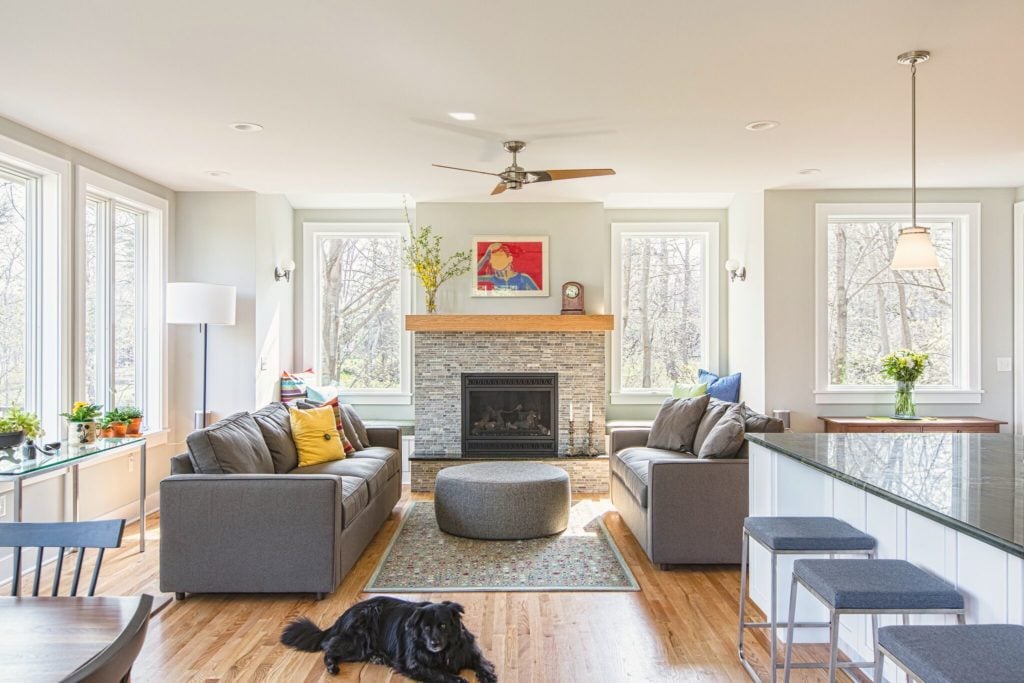How to Use Home Design Mood Boards When Designing a Remodel
You've seen them before and heard them be called by many names – mood boards, aesthetic boards, vision boards, style boards, etc. Some homeowners...
4 min read
Meadowlark Design+Build : Aug 5, 2024

Interior design is a crucial element of any design-build project. While it’s not the only factor to consider, it significantly contributes to creating a cohesive and inviting home. Good interior design allows your unique personality to shine, transforming your living spaces into personalized, functional areas.
If you want to start a custom home project or a remodel, understanding interior design basics can help you achieve a harmonious and aesthetically pleasing result. Here are some essential interior design tips to keep in mind for your next project.
Interior design is the art and science of enhancing a space's interior to create a more aesthetically pleasing and functional environment for the people using it. It combines color, furniture, decor, lighting, and spatial arrangement to create a cohesive look that reflects unique personality traits and needs.
At Meadowlark Design+Build, our interior design process is rooted in personalization, thoughtfulness, and sustainability. We begin with a personalized consultation to understand your unique needs and vision, ensuring every project is tailored to your goals. Our team offers a wide range of services, including:
Our holistic approach integrates design and construction, maintaining clear communication and attention to detail. From initial concept to final build and beyond, our team of professionals guides you every step of the way, delivering functional and beautiful results that truly reflect your personality and lifestyle.
Interior design is not just about making your home look good; it’s about creating a space that works well for you and enhances your quality of life. Here are some key benefits:
Show Personality and Flair:
Interior design allows you to express your unique personality and style, creating a living space that truly feels like home.
Customization:
A well-thought-out design makes a home feel less “cookie-cutter,” bringing out the “custom” in a custom home, making it unique and tailored to your preferences and needs.
Set the Tone of Different Rooms:
Interior design helps set the mood and purpose of each room. For example:
Improves Functionality:
Thoughtful interior design ensures that every space in your home is used efficiently, making daily activities more accessible and enjoyable.
Enhances Mood and Well-being:
A well-designed space can improve your mood and overall well-being by creating a comfortable, visually pleasing environment that brings you joy.
Provides Cohesion:
Good interior design ensures all elements within a space work together harmoniously, creating a cohesive and balanced look throughout your home.
Increases Home Value:
A beautifully designed interior can significantly increase the value of your home, making it more appealing to potential buyers.

Understanding and applying the fundamental principles of interior design can help you create a harmonious and visually appealing space you love. Here are seven essential principles to keep in mind for your next project, but remember, our team of professional designers at Meadowlark is always here to help guide you through the process:
1. Balance
Balance refers to the distribution of visual weight within a room. It ensures that no single part of the space overpowers the others.
Balance can be achieved through symmetry (creating mirror images), asymmetry (using different but equally weighted objects), and radial symmetry (arranging elements around a central point).
2. Unity
Unity is about creating a sense of harmony and consistency in a space. This principle involves using similar colors, materials, and styles throughout a room to create a cohesive look. When all elements work together seamlessly, it fosters a feeling of completeness.
3. Rhythm
Rhythm in interior design is about creating patterns of repetition and contrast to guide the eye through a room. This can be achieved by repeating shapes, colors, or textures at regular intervals, helping to establish a sense of movement and flow.
4. Emphasis
Emphasis is the principle of design that highlights the focal point or the most important part of a room. It could be a fireplace or a piece of artwork or furniture that draws the eye and anchors the space. Everything else in the room should complement, not compete, with the focal point.
5. Contrast
Contrast adds interest and drama to a space by juxtaposing different elements. This can include contrasting colors (such as black and white), shapes (such as round and square), or textures (such as smooth and rough).
6. Scale/Proportion
Scale and proportion ensure that the size of objects within a space is harmonious and appropriate to each other and the overall room. Proper proportion makes sure that no element looks out of place, and scale ensures that objects fit well within the space.
7. Details
Details are the finishing touches that bring a design together. This includes elements such as the knobs on the cabinets and other hardware details. Attention to detail ensures that every aspect of the room is well-thought-out and contributes to the overall design.

While you can always hang up a new picture frame or install a new lampshade after your project is done, certain interior design choices should be considered before or during the design-build process to ensure a cohesive and functional outcome:
Overall Style:
Decide on the overall style you prefer, whether it's mid-century modern, farmhouse, or another style that speaks to you. Our designers can help blend different styles for a more eclectic look, ensuring all elements work harmoniously together.
Colors:
It’s best to choose a color palette that complements the overall style and creates the desired mood in each room. Consider how colors flow from one space to another to maintain harmony throughout the home.
When it comes to colors, we don’t think you should overthink it – have fun! Interior designers will have fantastic ideas about incorporating colors in your home, but if your favorite color is blue, don’t be afraid to dedicate a whole room to that. It’s your space, and you should customize it so that you can enjoy it every day.
Focal Points/Points of Interest:
Each room should have a focal point that draws the eye and anchors the space. Our team can help you plan for significant focal points, such as custom kitchen countertops or bespoke fireplaces, integrating them seamlessly into the design.
Space:
Ensure you have enough space in each room to include your desired interior design features. Our space planning service considers furniture layout, traffic flow, and functional areas during the design process to avoid overcrowding and maintain usability.
At Meadowlark, our professional designers help you every step of the way. We guide you through these crucial decisions, ensuring your design-build project results in the space you’ve always dreamed of.

No custom home or remodeling project will turn out as good as it could without intentional interior design. At Meadowlark, our comprehensive design-build approach weaves interior design principles through while other structural designs are in progress — resulting in functional, BEAUTIFUL results every time.
For more information on how we can help with your next design-build project, get in touch.

You've seen them before and heard them be called by many names – mood boards, aesthetic boards, vision boards, style boards, etc. Some homeowners...

2021 Design Trends From the Experts By Susan Christian Most of us have said "Goodbye and Good-riddance" to 2020 and now that we are well-into the new...

Lighting is an often overlooked, yet incredibly important aspect of interior design. You may have noticed its importance at a theatrical arts show....